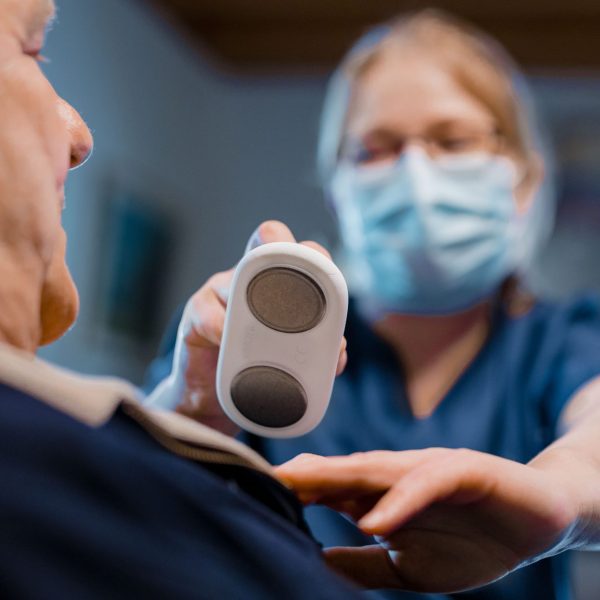The most common heart arrhythmia
Atrial fibrillation - the most common heart arrhythmia.

AF is the most common heart arrhythmia, which causes symptoms for some, but is asymptomatic for others. This means that the person in question is often completely unaware of suffering from AF. The most serious consequence of AF is a cerebral stroke causing disability, deaths, and huge costs for society
Some of the arrhythmias may strain the cardiac muscle, affect the physical performance and cause other complications. Atrial fibrillation is the most common asymptomatic arrhythmia, and also the one most likely to cause complications of some kind.
Atrial fibrillation is the most common long-lasting arrhythmia. The causes and symptoms can vary greatly. Atrial fibrillation is associated with the risk of serious complications, of which the most dangerous one is a stroke. It is essential to identify and diagnose atrial fibrillation at an early stage and minimize the effects of it.
High resting heart rate

A high resting heart rate can be caused, e.g. by the heart beating excessively or rapidly in a way that exceeds the normal resting rate. The main symptom is palpitation. Additionally, you can experience fatigue and even chest pain. The attacks may last for several minutes and often stop unaided. If the attack does not stop unaided, you should seek medical attention.
Low resting heart rate

The normal resting heart rate for healthy men usually range from 43 to 93 beats per minute, and for women between 52 and 94 beats per minute. If the heartbeat is too slow, it may cause fatigue, dizziness or even fainting. If your heart rate is consistently very low, and you experience symptoms, you should seek medical attention
Extrasystoles

Extrasystoles are the most common type of cardiac arrhythmias. They are so common that they are often considered to be part of the normal activity of a healthy heart. Only if they occur very frequently (> 5000/24h) can they be a sign of heart disease and you should seek medical attention.
Stroke
In a stroke, a blocked cerebral artery causes the brain tissue to be deprived of blood and oxygen. As a result, some of the brain tissue becomes necrotic, and a stroke occurs
A significant share of strokes are caused by atrial fibrillation, an irregular heartbeat that can lead to blood clots.
During atrial fibrillation, the heart beats irregularly instead of beating effectively to move blood into the ventricles. If a clot breaks off, enters the bloodstream and lodges in an artery leading to the brain, a stroke results.

Stroke symptoms
Call the emergency response center immediately, if you or someone with you exhibit any of the signs of a stroke mentioned below = pictures from awario.fi
Every sixth person will suffer from a stroke before the age of 75. About 20% of them are still in the working age. The consequences of a stroke are always very grave. A stroke is also always a big tragedy and cause of concern for everyone involved. By detecting and treating arrhythmia – such as atrial fibrillation – before severe complications occur, 2/3 of strokes could be prevented.
Atrial fibrillation can only be diagnosed with the help of an ECG.
A traditional ECG (Holter- 12 lead) requires the patient to visit a health care provider and costs time and resources.
Because Awario simple to use, hand-held and portable, an ECG can be done anywhere, anytime. It allows the early detection of arrhythmias for a wide range of users. Awario can be operated by MDs, nurses, pharmacists and the consumers themselves.

